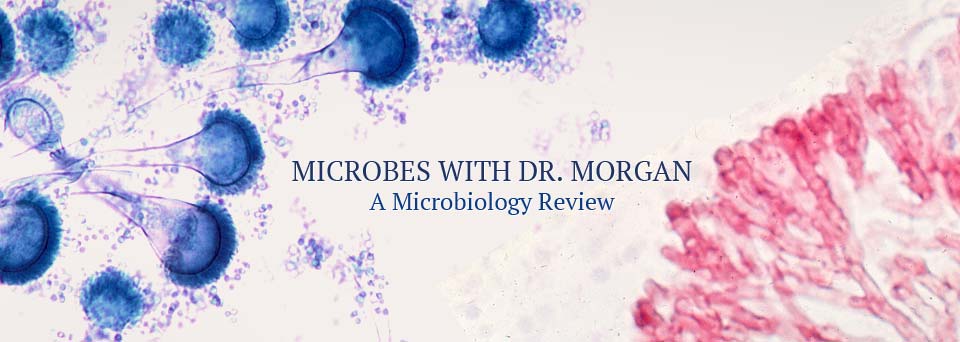1. A 10 year-old boy spent the summer with his uncle in Mexico who lives on a dairy farm. He is complains of fever, hip pain and fatigue. He drank unpasteurized cow milk. The most likely organism causing his infection:
a. Francisella tularensis
b. Brucella abortus
c. Brucella melitensis
d. Bacillus cereus
e. Pasteurella multocida
2. Blood cultures were collected from the patient in Question #1. What would be expected to grow from this culture:
a. Small gram negative rod which took 5 days to grow in aerobic blood culture bottle
b. Large gram negative rod that grew in 24 hours in anaerobe bottle
c. Small gram negative rod that grew only after addition of cysteine to the blood culture bottle
d. Sea gull shaped gram negative rod that grew in 3 days in the aerobic bottle
e. This organism will not grow in routine blood culture bottles
3. A culture is received in the microbiology laboratory from a patient who was bit by his dog. The cultured organism has the reactions: small gram negative rod, grey pinpoint colony pitting the agar surface, oxidase positive, catalase negative, bleach type odor. The organism is most likely:
a. Pasteurella multocida
b. Eikinella corrodens
c. Erysipelothrix rhusiopathiae
d. Cardiobacterium hominis
e. Haemophilus parainfluenzae
4. Positive patient blood culture grow an organism gram stain shows a gram negative cocco-bacilli, beta hemolytic colony on blood agar plate after 72 hours of incubation at 35*C and growing best on plates incubated in 5% C02 atmosphere, oxidase positive, catalase negative:
a. Haemophilus parainfluenza
b. Actinobacillus actinomycomitans
c. Kingella kingae
d. Cardiobacterium hominis
e. Eikinella corodens
5. An organism isolated from a positive blood culture from a patient in the intensive care unit. The organism isolated grows well on a Blood agar plate incubated at 35*C in room air, grey non-hemolytic colony, gram positive rod (diphtheroid like), non-motile, catalase positive, urease negative, resistant to most antibiotics but susceptible to vancomycin.
a. Erysipelothrix rhusiopathiae
b. Corynebacterium jeikeium
c. Listeria monocytogenes
d. Corynebacterium urealyticusm
e. Bacillus cereus
6. A positive blood culture at 36 hours grows an organism on Gram stain shows gram positive cocci in pairs and chains. Initial subculture onto Blood agar plate incubated at 35*C in 5% CO2 shows “no growth”. However, the organism has satellite growth as pinpoint colonies around a streak of Staphylococcus aureus on a blood agar plate. The organism is most consistent with:
a. Streptococcus anginosus
b. Streptococcus agalactiae
c. Abiotrophia species
d. Gemella species
e. Rothia species
7. A positive blood culture is gram stained and shows a gram negative diplococcius, grows on Blood agar and Chocolate agar media incubated at 35 *C in 5% CO2., oxidase positive, utilize the carbohydrates glucose and maltose, but cannot utilize sucrose or lactose. This organism is most likely:
a. Neisseria lactamica
b. Kingella kingae
c. Neisseria meningitidis
d. Moraxella catarrhalis
e. Neisseria gonorrnoeae
8. A wound culture is submitted to microbiology which grows gram positive cocci in clusters, white non-hemolytic colony on blood agar plate, coagulase negative, catalase positive, PYR positive. Identification is most likely:
a. Staphylococcus saprophyticus
b. Staphylococcus haemolyticus
c. Enterococcus faecalis
d. Enterococcus faecium
e. Staphylococcus ludgeninsis
9. A positive blood culture is gram stained and shows a short gram positive rod, alpha hemolytic colony on blood agar plate, catalase negative, non-motile, non-spore producer, H2S produced on a triple sugar iron agar slant:
a. Erysipelothrix rhusiopathiae
b. Listeria monocytogenes
c. Corynebacterium urealyticus
d. Corynebacterium jeikeium
e. Bacillus cereus
10. A culture was performed from a lymph node aspirate, gram stain shows a gram negative rod that has bipolar staining (like a safety pin), grows on a blood agar plate incubated at 35*C in 5% CO2, oxidase negative, catalase positive. The person had been on an extended hike in the Southwest and reported some insect bites.
a. Francisella tularensis
b. Cardiobacterium hominis
c. Yersinia pestis
d. Haemophilus parainfluenza
e. Brucella canis
Key: 1.B 2.A 3.B 4.C 5.B 6.C 7.C 8.E 9.A 10.C

No comments:
Post a Comment